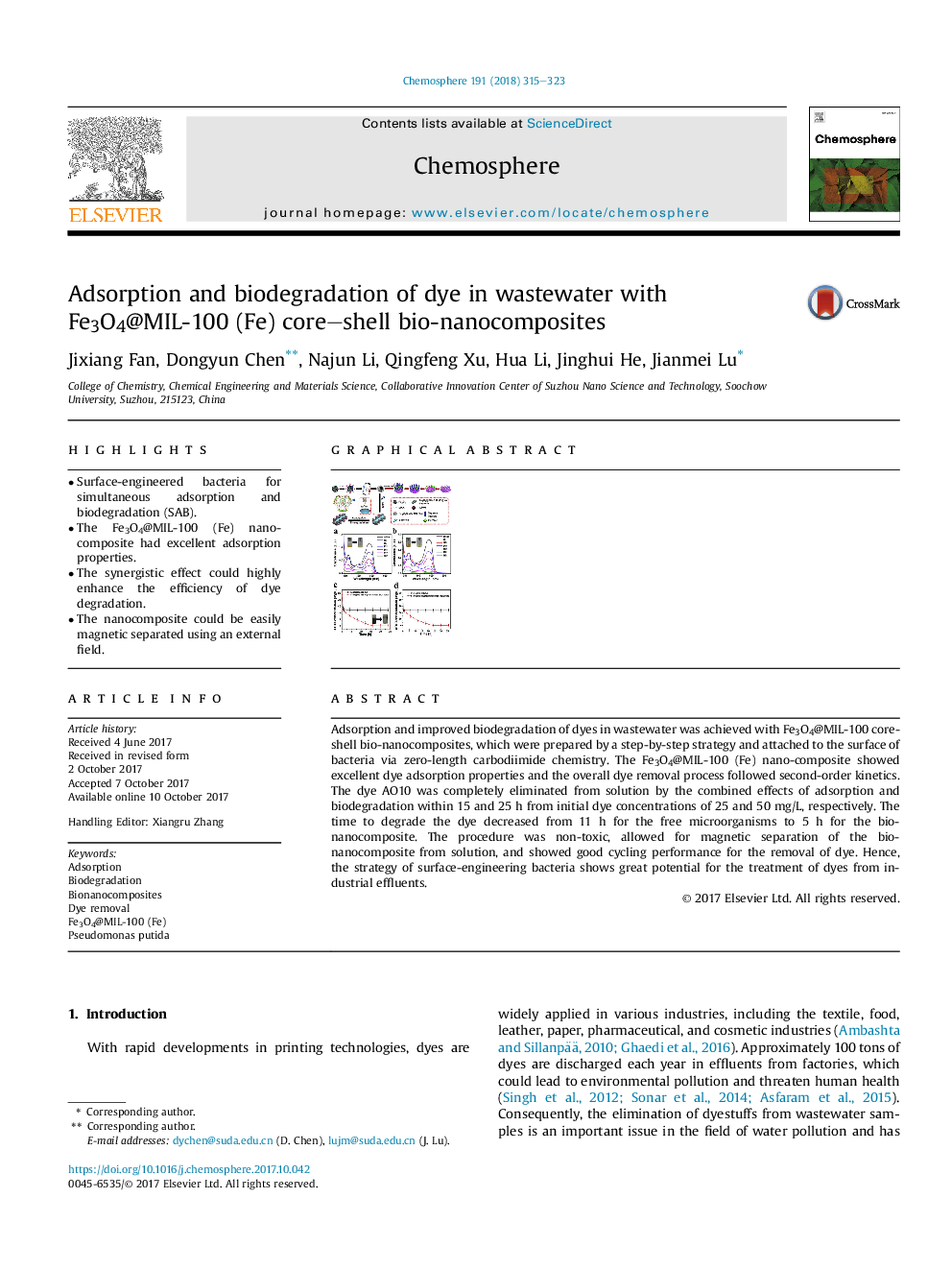| Article ID | Journal | Published Year | Pages | File Type |
|---|---|---|---|---|
| 5745745 | Chemosphere | 2018 | 9 Pages |
â¢Surface-engineered bacteria for simultaneous adsorption and biodegradation (SAB).â¢The Fe3O4@MIL-100 (Fe) nanocomposite had excellent adsorption properties.â¢The synergistic effect could highly enhance the efficiency of dye degradation.â¢The nanocomposite could be easily magnetic separated using an external field.
Adsorption and improved biodegradation of dyes in wastewater was achieved with Fe3O4@MIL-100 core-shell bio-nanocomposites, which were prepared by a step-by-step strategy and attached to the surface of bacteria via zero-length carbodiimide chemistry. The Fe3O4@MIL-100 (Fe) nano-composite showed excellent dye adsorption properties and the overall dye removal process followed second-order kinetics. The dye AO10 was completely eliminated from solution by the combined effects of adsorption and biodegradation within 15 and 25Â h from initial dye concentrations of 25 and 50Â mg/L, respectively. The time to degrade the dye decreased from 11Â h for the free microorganisms to 5Â h for the bio-nanocomposite. The procedure was non-toxic, allowed for magnetic separation of the bio-nanocomposite from solution, and showed good cycling performance for the removal of dye. Hence, the strategy of surface-engineering bacteria shows great potential for the treatment of dyes from industrial effluents.
Graphical abstractSimultaneous Adsorption and Improved Biodegradation of Dye Wastewater Using Fe3O4@MIL-100 (Fe) Core-Shell Bionanocomposites.Download high-res image (220KB)Download full-size image
